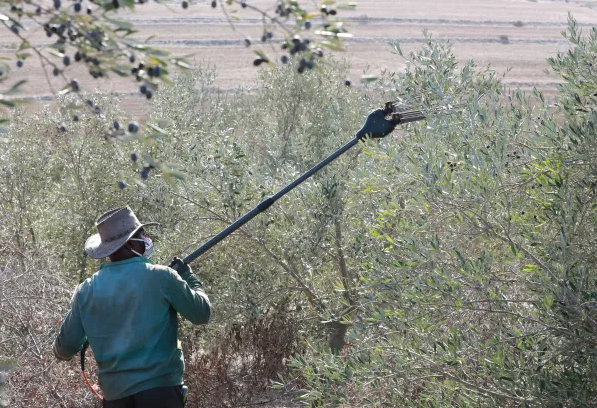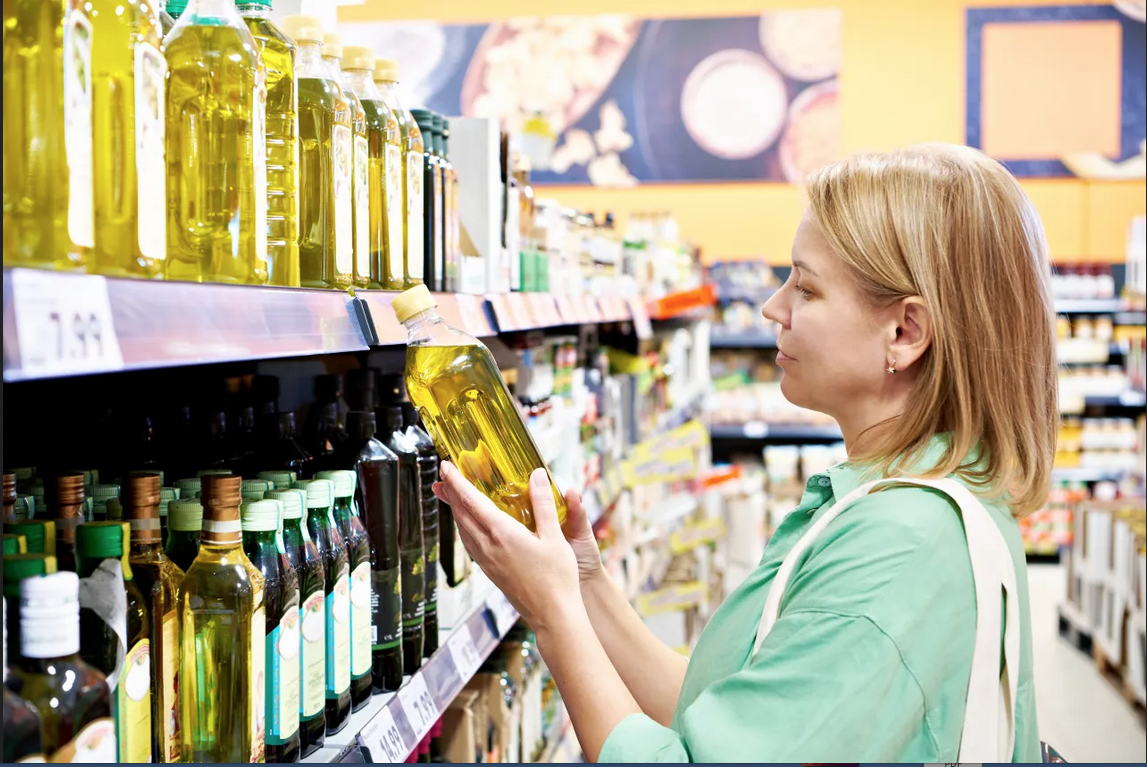With demand at an all-time high and supply heavily constrained, consumers of the ‘liquid gold’ around the world will be paying more for olive oil this year.
Olive oil prices are set to rise over the coming months, despite an expected decent harvest in South Africa, which means consumers of the oil described by the Greek poet Homer as “liquid gold” will have to become accustomed to forking out more than R300 per litre at retail level.
With reports of another sharp price increase on the cards for mass-market olive oil, global production has dropped to the lowest level in more than a decade, while demand has soared, driven by the growing popularity of the Mediterranean diet, which is rich in vegetables, pulses and olive oil, the increasing use of olive oil as a beauty product, and crime.
Spain, the world’s largest producer of both bulk and quality oils, has suffered three consecutive poor harvests due to drought and extreme heat, linked to climate change, which has hit other Mediterranean producers such as Italy and Greece similarly hard.
In February, the industry publication The Olive Oil Times reported that unions in Spain had admonished the government for reducing funding for agricultural insurance in its budget, and called on it to do more to fight climate change amid unrelenting heatwaves that have decimated their crops. Juan Vilar, the CEO of agriculture and olive oil consultancy Vilcon, calls the climate situation “very different” from before, because of its increasing impact on olive oil production. “If the weather doesn’t change, olive oil prices will continue to rise.”
Villar added that Spain has plentiful water resources but must manage them better, which requires state investment in better protecting and using them for agriculture and domestic consumption. “We need artificial lakes, reservoirs, desalination plants for seawater, and a way to clean up black water from the cities to improve water availability for agriculture and human consumption,” he said. “The government needs to do more to improve the current situation.”
The European Commission says olive oil prices have consistently increased in recent years, rising by 75% across the European Union since January 2021.
The outlook is not good: Spain’s State Meteorological Agency says there has been a massive increase in heatwaves in that country since 2015.
Home to 40% of the global olive crop, Spain has seen output drop by up to 50% of its usual 1.3 million metric-ton harvests. Prices have also nearly tripled in that country over the past four years.

Climate change
Compounded by outbreaks of bug infestations in Italy and Australia, and a raft of reports of supply chain issues, food fraud and theft, production has dropped to its lowest level in more than 10 years.
Climate change has been blamed for driving up the cost of olive oil to record levels. The International Monetary Fund says prices are double what they were just two years ago, to nearly $10,000 per metric ton.
The Guardian reports that Spanish shoppers who paid less than €5 (R99.90) for a litre of high-quality extra-virgin oil (EVOO) in 2020 are now seeing prices of about €14. And next month, prices in the UK are expected to jump to more than £16 (R370).
Theft
Olive oil has also become the most stolen product in supermarkets in Europe. In the UK, some retailers have already begun locking olive oil bottles behind security box gates to deter theft and other stores are fitting the bottles with security tags, while in Spain and Greece, criminal gangs are targeting the “liquid gold” to resell, the UK newspaper reported.
In October 2023, the Guardian reported that the Polygyros olive oil cooperative in Halkidiki, northern Greece, had lost least 37 tonnes of oil worth more than €300,000 from its storage facilities and a further 100kg from plastic barrels in Messinia in the south, in a series of warehouse break-ins spanning several weeks.
“They don’t go for jewellery any more, they go for olive oil,” Themis Kanellopoulos, a reporter in Kalamata, told the paper. “In upper Messinia there have been cases of houses being broken into with thieves only interested in storage areas, and for the first time we have seen olive oil stolen from cemeteries.”
Gangs have also used chainsaws to steal heavily laden branches — and even chop up entire trees — which is forcing farmers to patrol their groves.
In Italy’s southwestern port city of Bari, thieves have become increasingly brazen, snatching tractors and expensive equipment along with olives.
In December 2023, police in Spain and Italy arrested 11 people and seized more than 5,000 litres of adulterated olive oil after breaking up an international gang that allegedly sought to profit by passing off cheap oils as more expensive equivalents.
Fraud
Olive oil, at high risk of fraudulent claims due to its high price, is at high risk of adulteration, most commonly by the addition of other vegetable oils, such as canola and soybean, while poor-grade oils are diluted with extra-virgin olive oil to hike profits.
It is also one of the most fraud-affected food products on Earth, especially linked to provenance. The earliest reports of fraud date to the first century AD, say the Food Fraud Advisors, citing a description of the ancient historian Aelius Galenus about how merchants would water down expensive olive oils with cheaper ingredients to increase their profits. In another example, the international agency cites a fifth-century Roman cookbook that describes how to make cheap Spanish oil resemble expensive Italian oil by adding minced herbs and roots.
The situation in South Africa
Despite South Africa’s reputation for producing world-class olive oil, its production is limited to about a quarter of local requirements, so most olive oil is imported, subject to the volatile commodity market.
South Africa imports about seven million litres of olive oil each year, predominantly of Spanish origin, and/or around the Mediterranean.
The worldwide shortage of olive oil has a ripple effect.
A raft of domestic issues are affecting the price competitiveness of locally produced oils, says Wendy Petersen, the CEO of the South African Olive Association.
Yields are down in many parts of the country, olive oil producers are not investing and planting new trees, input costs have risen – as are labour costs and practices – state infrastructure is poor, energy supply is unreliable, and weather conditions are changing.
“Among all these challenges, there are positive highlights that we must celebrate. South African-produced EVOOs have seen an increase in winning awards on a global platform. We are excited and proud about this movement and the recognition that South Africa produces, especially among global peers.”
Mardouw’s general manager, Philip King, adds that reduced local production has caused retail prices to go up as much as 55% and bulk prices by 100%. “You will notice quite a number of producers ‘out of stocks’ on retail shelves.”
The increased fuel price, above-inflation minimum wage increases and fertiliser prices have added to high input costs, but while load shedding is an issue, most producers have back-up supply – “unfortunately this also comes with a price”.

Natural cycles
Creation winemaker Gerhard Smith explains that olive trees have a natural cycle of alternating high and low production years, known as an “on-off” cycle. During an on-year, olive trees bear heavily, resulting in increased olive oil production, but in off-years, supply is curtailed.
“No one knows how to get an average crop. It’s a mystery why the trees do this. This year, we were expecting a big crop, but with the big storm and high winds that we had in September, we lost flowers, so our harvest is smaller than last year.”
Creation Wines – the world’s fourth-best wine tourism destination last year – produces small batches of olive oil, which it sells through its tasting room.
Water is not the problem, since Creation has enough to irrigate, Smith says, and its trees are healthy, but the stormy weather limited pollination. “These factors have quite a big influence on the price. Some of the bigger producers in our area (Hemel-en-Aarde) didn’t even start up their press because their crop was too small.”
In Wellington, Diemersfontein Wine and Country Estate started planting olive trees a few years ago, for sale “at a good price” to visitors and residents of the estate. Cellarmaster Francois Roode says their volumes have increased, so in a good year they produce about 3,000 litres per harvest. Last year, an “off” year for olive production, they achieved only 500 litres. But generally, volumes are up and this year’s harvest is looking good, allowing them to export some EVOO and sell locally.
Olive oil production is labour intensive and it’s expensive to press, and farmers operate on thin margins. Rob Still of De Rustica, whose Estate Collection Coratina was awarded “best in class” at the Evooleum Awards in Spain for 2023, says producers could achieve much better prices abroad, but they need to market themselves collectively internationally at greater scale, while not neglecting their long-term domestic retail consumers.
“The bottom line is South Africa produces in the top 5% of the world’s quality but it gets paid in the bottom 5% of the world price range, because of bad marketing.”
Stay informed with The Namibian – your source for credible journalism. Get in-depth reporting and opinions for
only N$85 a month. Invest in journalism, invest in democracy –
Subscribe Now!






